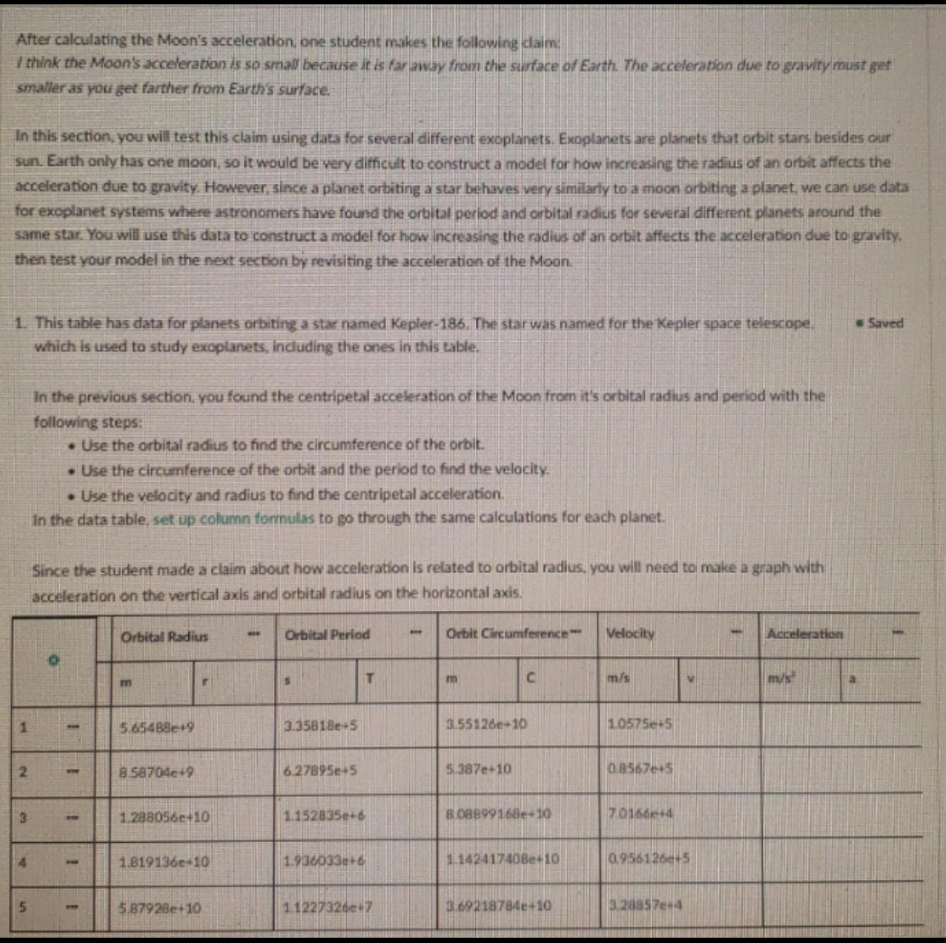solve only the acceleration
After calculating the Moon's acceleration, one student makes the following claim I think the Moon's acceleration is so small because it is far away from the surface of Earth. The acceleration due to gravity must get smaller as you get farther from Earth's surface. In this section, you will test this claim using data for several different exoplanets. Exoplanets are planets that orbit stars besides our sun. Earth only has one moon, so it would be very difficult to construct a model for how increasing the radius of an orbit affects the acceleration due to gravity. However, since a planet orbiting a star behaves very similarly to a moon orbiting a planet, we can use data for exoplanet systems where astronomers have found the orbital period and orbital radius for several different planets around the same star. You will use this data to construct a model for how increasing the radius of an orbit affects the acceleration due to gravity. then test your model in the next section by revisiting the acceleration of the Moon. 1. This table has data for planets orbiting a star named Kepler-185. The star was named for the Kepler space telescope. . Saved which is used to study exoplanets, including the ones in this table. In the previous section, you found the centripetal acceleration of the Moon from it's orbital radius and period with the following steps: . Use the orbital radius to find the circumference of the orbit. . Use the circumference of the orbit and the period to find the velocity. . Use the velocity and radius to find the centripetal acceleration. In the data table, set up column formulas to go through the same calculations for each planet. Since the student made a claim about how acceleration is related to orbital radius. you will need to make a graph with acceleration on the vertical axis and orbital radius on the horizontal axis. Orbital Radius Orbital Period Orbit Circumference" Velocity Acceleration C m/s m/s' 5.654Bge+9 3.3581de -5 3.55126e-10 10575e+5 8.587040+9 6.27895e+5 5.387e+10 0.85676+5 1.2880565+10 1.152835e-6 8.08899168e-10 70166+4 1.819136c-10 1.936033#+6 1.14241740Be-10 0.956126-+5 5.87928e+ 10 1 1227320e-7 1.6921878de+10 3.23857e-4







